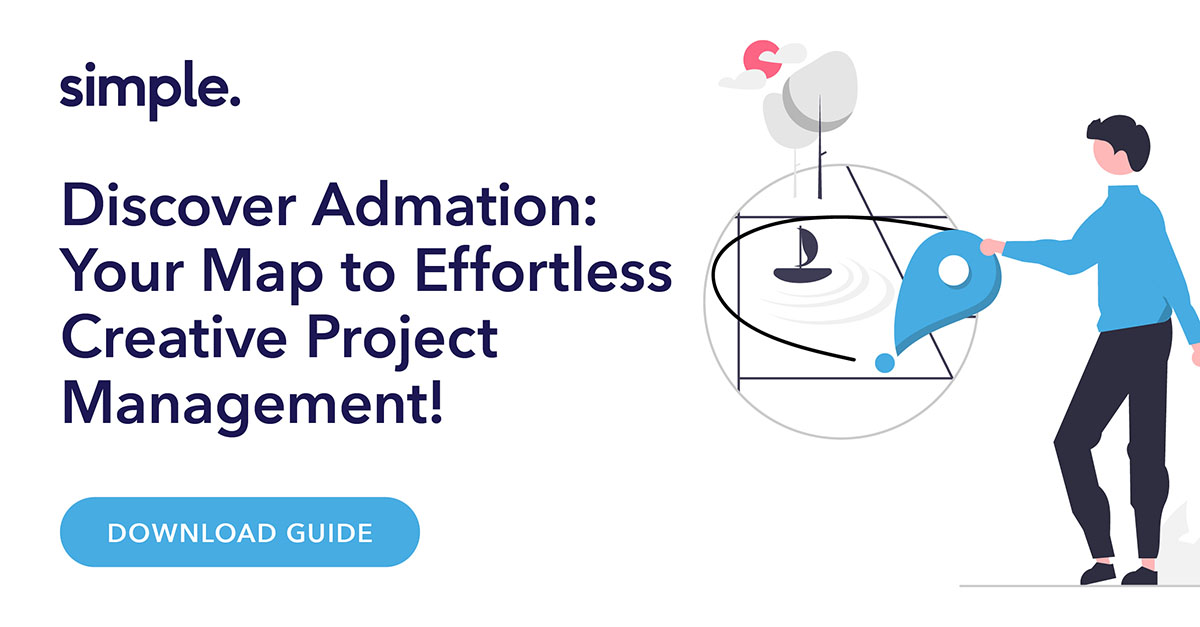Choosing the Right Marketing Project Management Software
Stakeholder Collaboration: Selecting the Perfect Creative Project Management Software
Across the marketing industry, efficiency and collaboration are king. Creative Project Management Software or Marketing Project Management Software has become an essential tool for streamlining workflows, boosting team productivity, ensuring brand consistency and managing marketing compliance across marketing projects. However, selecting the right solution isn't a one-size-fits-all approach.
This in-depth guide dives into the importance of stakeholder collaboration when choosing Creative Project Management Software. We'll explore the benefits for each department involved, delve into strategies for navigating differing priorities, and equip you with the knowledge to make an informed decision that empowers your entire team.
The Power of Stakeholder Collaboration: A Symphony of Needs
Imagine a scenario where you implement a Marketing Project Management Solution that streamlines approval processes, but your creative team finds the interface clunky and unintuitive. Meanwhile, your account managers lack the project tracking features crucial for keeping clients informed. This is a classic example of why involving various departments in the selection process is paramount. Each department brings a unique perspective and set of needs to the table. Here's a closer look at the key stakeholders and their crucial roles:

Marketing & Creative Teams:
These are the creative powerhouses behind your marketing campaigns. They require a platform that simplifies creative processes, facilitates revisions, fosters clear communication, and empowers them to deliver high-quality work efficiently.
Ideal Features: Drag-and-drop functionality for easy project organization, robust revision management tools with version control and feedback loops, built-in online proofing and annotation capabilities, collaborative whiteboarding and brainstorming features, integration with design and creative software.
Account Managers:
The bridge between clients and internal teams, account managers juggle client communication, project oversight, and ensuring on-time delivery. Their ideal Creative Project Management Solution needs to support these critical functions.
Ideal Features: Client portals for secure collaboration and feedback exchange, real-time project tracking with customizable dashboards, reporting tools for generating client-friendly reports, resource management capabilities to monitor team workload and avoid bottlenecks, task dependencies and scheduling features to visualize project timelines.
IT Department:
The guardians of your technological infrastructure, the IT department plays a crucial role in ensuring seamless integration with existing systems, assessing technical feasibility, and prioritizing data security.
Ideal Considerations: Open APIs for smooth integration with existing software, robust security features like user permissions, data encryption, and two-factor authentication, compliance with relevant data privacy regulations, a dedicated support team for troubleshooting and technical assistance.
Finance Department:
Cost-effectiveness is a major concern for the finance department. They analyze pricing models, licensing options, and long-term financial implications to ensure the chosen CPMS delivers a strong return on investment (ROI).
Ideal Considerations: Transparent pricing models with clear subscription tiers and scalable options for future growth, flexible licensing options that cater to team size and user needs, detailed reporting tools for tracking software usage and cost allocation.
Risk & Compliance Team:
These are the gatekeepers of legal and regulatory compliance. They safeguard the company by mitigating risks associated with marketing approvals, asset usage and adherence to internal policies.
Ideal Considerations: Compliance with relevant data privacy regulations (e.g., GDPR, CCPA), secure file storage and access controls, features for managing intellectual property rights and permissions, audit trails for tracking user activity and maintaining a record of changes.
Brand Management Team:
The protectors of your brand identity, the brand management team needs a tool that upholds brand guidelines and facilitates efficient brand review processes.
Ideal Features: Brand asset management tools for storing and organizing logos, color palettes, fonts, and other brand elements, templating features for maintaining consistency across marketing materials, built-in brand review and approval workflows, integration with brand style guides and design software.
Benefits for Every Department: A Symphony of Success
By involving all key stakeholders in the selection process, you ensure a solution that caters to everyone's needs and fosters a collaborative work environment. Let's explore the specific benefits each department reaps from a well-chosen Creative Project Management Software:
Marketing & Creative Teams:
- Faster Time-to-Market: Streamlined workflows eliminate bottlenecks, online briefing tools facilitate clear project communication from the start, and efficient revision processes with better version control keep projects moving forward.
- Enhanced Collaboration: A user-friendly interface empowers everyone on the team, regardless of technical expertise, to contribute and stay informed. Clear communication and feedback loops ensure everyone is on the same page.
Account Managers:
- Impress Clients: Comprehensive reports showcase project progress and value delivered. On-time project delivery builds trust and strengthens client relationships. Real-time project tracking keeps everyone informed and allows for proactive problem-solving, preventing delays and ensuring client satisfaction.
IT Department:
- Minimized Risk & Enhanced Security: Single Sign-On (SSO) simplifies user access and reduces the risk of unauthorized logins. Robust security features like data encryption, user permission controls, and audit trails safeguard sensitive information and project data. Seamless integration with existing systems minimizes compatibility issues and reduces IT support burdens.
Risk & Compliance Team:
- Reduced Risk & Streamlined Compliance: The software acts as a single source of truth, ensuring everyone has access to the latest project information and reduces the risk of errors or inconsistencies. Consistent processes enforced by the software minimize the risk of non-compliance with regulations. Detailed audit trails provide a clear record of activity for regulatory audits and internal reviews. Complete project history allows for easy access to past project details, simplifying marketing compliance efforts.
Brand Management Team:
- Brand Consistency & Streamlined Reviews: Dedicated brand asset management tools provide a central repository for logos, color palettes, fonts, and other brand elements, ensuring consistent brand application across all marketing materials. Templating features offer pre-designed layouts that uphold brand guidelines. Built-in brand review and approval workflows streamline the review process and ensure brand compliance. Integration with design software allows for seamless brand-compliant creative development.
As you can see, a well-chosen solution offers a multitude of benefits across departments. By fostering collaboration and prioritizing security, you can empower your team and achieve marketing success.
Prioritising Stakeholder Needs: A Collaborative Harmony
When navigating differing needs and priorities among stakeholders, a collaborative approach is crucial. Here are some effective strategies to consider:
Identify the Primary Objective: The first step is to clearly define the main goal for implementing marketing project management software. Is it to:
- Streamline workflows and improve efficiency (e.g., faster time-to-market)?
- Enhance brand consistency across campaigns?
- Improve collaboration between internal and external teams?
- Manage marketing compliance with regulations?
Having a clear primary objective provides a guiding light for evaluating stakeholder needs.
Impact on Business Objectives: Analyze how each stakeholder's needs contribute to achieving the primary objective. For example, if the focus is on improving brand consistency, the brand management team's need for brand asset management tools and streamlined review workflows becomes a high priority. Weigh the potential benefits and risks associated with accommodating each stakeholder's preferences.
Collaboration & Compromise: Foster open communication and encourage collaboration among stakeholders. Organize workshops or brainstorming sessions to discuss needs and explore solutions. Seek areas where compromises can be made to satisfy multiple requirements without compromising the primary objective.
Consider a scenario where the marketing team desires a feature-rich marketing project management software with advanced design capabilities, while the IT department prioritizes a lightweight solution with minimal impact on existing infrastructure. A potential compromise could be selecting software with core functionalities that meet both needs and offering additional design tools as integrations that can be adopted gradually.
Align with Organizational Priorities: Don't forget to consider the company's strategic vision and long-term goals. The chosen marketing project management software solution should support these priorities and have a positive impact on the company's overall performance. For instance, if the company is undergoing rapid growth, a scalable solution with flexible licensing options will be a wise choice.
Making the Final Decision: A Symphony Conducted Well
By following these steps and fostering a collaborative environment, you can navigate the marketing project management software selection process with confidence. Here are some additional tips for making the final decision:
Shortlist and Demo Software: Once you have a clear understanding of your needs and priorities, shortlist a few marketing project management software options that seem like good fits. Schedule demos with each vendor to get a hands-on experience with the software and ask detailed questions about features, scalability, security, and support options.
Free Trials and User Testing: Many vendors offer free trials, which are valuable opportunities for your team members to test-drive the software and provide feedback. Involve representatives from various departments in the trial process to ensure the chosen solution meets everyone's needs.
Total Cost of Ownership (TCO): While pricing is important, consider the total cost of ownership (TCO) which includes implementation costs, ongoing subscription fees, user training, and potential customization costs. Look for a solution that delivers a strong return on investment (ROI) over time.
Implementation and Onboarding: Choosing the right marketing project management software is just the first step. Develop a robust implementation plan to ensure a smooth transition and maximize user adoption. Invest in user training and provide ongoing support to ensure your team can leverage the software's full potential.
By involving key stakeholders from the outset, prioritizing needs collaboratively, and making an informed decision, you can select a marketing project management software solution that empowers your team, streamlines workflows, and drives marketing success. Remember, the right solution is an investment in your team's creativity and productivity, ultimately leading to a competitive edge and a stronger brand.

